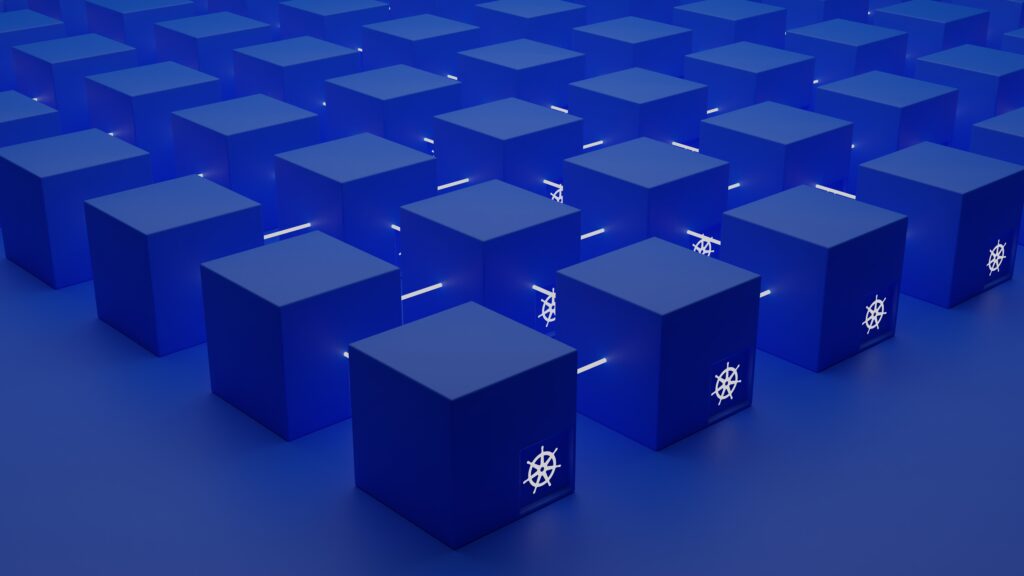Deep Dive into Containers: A Summary of the Content

In “Deep Dive into Containers: A Summary of the Content,” this article explores the utilization of DORA metrics as a means to measure the productivity of developer teams. The content highlights that while the implementation of DORA metrics can vary in effectiveness among different organizations, there is an option for readers to subscribe and receive the final survey results through a newsletter. Additionally, the article mentions the introduction of a new daily email newsletter for readers to stay informed about TNS articles. Covering a wide range of topics such as cloud native ecosystem, containers, edge computing, microservices, and more, this summary provides an encompassing overview to give readers context on the subject.
Introduction
The use of DORA metrics to measure developer team productivity has become increasingly prevalent in the software development industry. These metrics, developed by the DevOps Research and Assessment (DORA) team, provide valuable insights into the efficiency, quality, and speed of software development processes. However, the effectiveness of these metrics can vary among organizations, as each company has its own unique set of challenges and requirements.
To gain a better understanding of the impact of DORA metrics on developer team productivity, a comprehensive survey was conducted among various organizations. The results of this survey provide valuable insights that can help organizations identify areas for improvement and optimize their software development practices. Readers who are interested in accessing the final results of the survey can subscribe to our newsletter, where we will share the findings.
In addition to the survey results, we are excited to announce the launch of our new daily email newsletter. This newsletter will provide readers with updates on the latest articles published on our platform, covering a wide range of topics including cloud native ecosystem, containers, edge computing, microservices, networking, serverless, storage, AI, frontend development, software development, TypeScript, WebAssembly, cloud services, data security, platform engineering, operations, CI/CD, tech life, DevOps, Kubernetes, observability, and service mesh.
Cloud Native Ecosystem
The cloud native ecosystem refers to a set of technologies and practices that enable organizations to design, develop, deploy, and manage cloud-native applications. These applications are specifically built to leverage the flexibility and scalability of cloud environments. The cloud native approach is becoming increasingly popular due to its ability to improve developer productivity, enhance application scalability, and reduce costs.
Cloud native technologies, such as containerization, container orchestration, and serverless computing, play a crucial role in enabling organizations to embrace the cloud native approach. These technologies provide a standardized and efficient way to package, deploy, and manage applications, allowing for easier scaling, faster deployment, and improved resource utilization.
By adopting cloud native solutions, organizations can benefit from improved agility, faster time-to-market, and lower infrastructure costs. Containerization, in particular, offers numerous advantages such as simplified application management, better resource efficiency, and improved portability across different environments.

Containers
Containers are lightweight, standalone units that encapsulate an application and its dependencies. They provide a consistent and isolated environment for running applications, ensuring that they can be easily deployed and scaled across different environments. Containerization has gained popularity in recent years due to its numerous benefits.
One of the key benefits of containerization is improved application portability. Containers eliminate the need for complex configuration and dependencies, allowing applications to run consistently across different environments. This makes it easier to deploy applications on different platforms, from local development environments to production servers.
Container orchestration is another important aspect of containerization. It involves the management and scaling of containers across a cluster of servers. By using container orchestration tools such as Kubernetes, organizations can automate the deployment, scaling, and management of containers, resulting in improved efficiency and reduced operational overhead.
While containerization offers significant advantages, there are also challenges associated with its adoption. One of the main challenges is the complexity of managing containerized applications at scale. As the number of containers increases, organizations need robust monitoring, logging, and management tools to ensure the smooth operation of their applications.
Edge Computing
Edge computing is a distributed computing paradigm that brings computing power closer to the edge of the network, closer to where the data is generated and consumed. This approach aims to reduce latency, improve performance, and enable real-time processing of data.
Edge computing has various applications and use cases across different industries. For example, in the healthcare industry, edge computing can be used to process and analyze patient data in real-time, allowing for quicker diagnosis and treatment decisions. In the transportation industry, edge computing can enable autonomous vehicles to make real-time decisions based on sensor data.
One of the advantages of edge computing is the ability to process data locally, reducing the need for data to be sent to centralized data centers. This not only reduces latency but also mitigates issues related to bandwidth and network availability.
However, edge computing also faces challenges such as limited resources, security concerns, and the need for standardized frameworks and protocols. Organizations need to carefully consider these challenges before adopting edge computing solutions.

Microservices
Microservices architecture is an approach to software development that focuses on building small, loosely coupled services that work together to form a larger application. This architecture promotes scalability, modularity, and agility, making it easier to develop, test, and deploy complex applications.
One of the key benefits of microservices is the ability to scale individual services independently. This allows organizations to allocate resources efficiently and ensure that critical services can handle high loads, while less critical services can be scaled down.
However, microservices also come with their own set of challenges. Communication between services can become complex, and organizations need to establish robust service discovery and load balancing mechanisms. Additionally, deploying and managing a large number of microservices can be challenging, requiring organizations to adopt effective deployment strategies and automation tools.
Networking
Networking considerations play a crucial role in containerized environments. With containers running across multiple hosts and communicating with each other, organizations need to ensure that their networking infrastructure is reliable, scalable, and secure.
Service discovery and load balancing are important aspects of networking in containerized environments. Service discovery enables containers to find and communicate with each other, while load balancing ensures that traffic is distributed evenly across containers for optimal performance.
Network security is another critical aspect that organizations need to address. With containers running on shared infrastructure, isolation and security measures are necessary to prevent unauthorized access and data breaches.
Monitoring network performance and troubleshooting issues are also important considerations. Organizations need to implement robust monitoring and observability tools to effectively manage their containerized networking infrastructure.

Serverless
Serverless computing, also known as Function-as-a-Service (FaaS), is a model in which organizations can execute and run code without the need to manage the underlying infrastructure. In serverless architectures, organizations only pay for the actual execution time of the code, resulting in cost savings and improved scalability.
One of the key advantages of serverless computing is the reduced operational overhead. Organizations can focus on writing and deploying code, without worrying about provisioning and managing servers. This allows for faster development cycles and increased agility.
However, serverless computing also has its limitations. Long-running processes may not be suitable for serverless architectures, and applications with complex dependencies may require additional management and coordination. Organizations need to carefully assess their application requirements and consider the trade-offs before adopting serverless solutions.
Storage
In containerized environments, organizations need to consider storage options that can meet the needs of their applications. Container storage options include ephemeral storage, which is local to the container and gets destroyed once the container is stopped, and persistent storage, which allows data to persist across container restarts.
Persistent storage solutions such as network-attached storage (NAS) and storage area network (SAN) enable organizations to store and retrieve data across multiple containers and hosts. These solutions provide durability, reliability, and scalability, ensuring that data is accessible and secure.
Data management and backup strategies are crucial considerations when it comes to storage in containerized environments. Organizations need to implement effective data backup and recovery mechanisms to ensure the integrity and availability of their data.
AI in Containers
The integration of artificial intelligence (AI) with containers has gained significant attention in recent years. Running AI workloads in containers offers several benefits, such as improved scalability, resource utilization, and portability.
By leveraging containerization, organizations can easily deploy and scale AI models, allowing for faster experimentation and iteration. Containers enable the separation of application logic from the underlying infrastructure, making it easier to move AI workloads across different environments.
However, there are challenges and considerations when it comes to running AI workloads in containers. Managing large datasets and ensuring high-performance computing resources can be complex. Organizations need to carefully plan their infrastructure, storage, and networking capabilities to support AI workloads effectively.
Conclusion
In conclusion, the use of DORA metrics provides valuable insights into developer team productivity. However, the effectiveness of these metrics can vary among organizations, as each company has its own unique challenges and requirements. The survey results discussed in this article offer organizations the opportunity to learn from industry peers and optimize their software development practices.
The cloud native ecosystem, with its focus on containerization, edge computing, microservices, networking, serverless computing, storage, and AI, offers organizations the tools and technologies to develop and deploy scalable and efficient applications. By understanding the advantages, challenges, and considerations of each of these areas, organizations can make informed decisions and drive innovation in their software development processes.
Looking towards the future, containerization and the broader cloud native approach will continue to play a significant role in the software development industry. As technology continues to evolve, there will be ample opportunities for investment in digital products, services, and tools that support and enhance the containerization process. By staying updated on the latest trends and advancements in the field, organizations can position themselves for success in this rapidly changing landscape.






